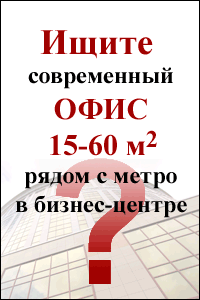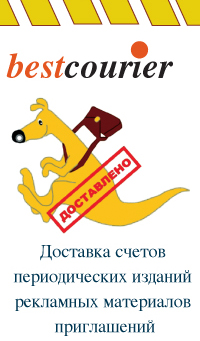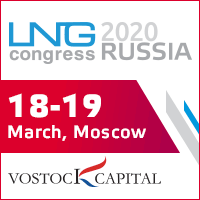Russia and India reaping the fruits of positive synergy from strategic partnership

These countries have time and time again reaffirmed the long-term, strategic nature of their partnership. For instance, 2008 was declared the ‘Year of Russia’ in India, while 2009 has been declared the ‘Year of India’ in Russia — events traditionally marked with a series of high-profile cultural, political and economic activities that are intended to further deepen the existing robust ties between the two countries.
Besides, Russian President Dmitry Medevdev was one of the first foreign leaders to visit India on the aftermath of the horrible terrorist attacks on Mumbai in 2008, where he eagerly expressed Moscow’s readiness to help New Delhi combat terrorism. “We have really friendly, strategic partnership relations with India, and Moscow is ready for broad-scope cooperation on all issues, including terrorism, because we are fully ready to help our Indian friends to combat this evil.”
A review of history of bilateral cooperation
The history of the contemporary Russia-Indian ties can be traced to the time of the latter’s attainment of independence in 1947. And, these cordial relationships, especially the political component, did not completely wind down even after the collapse of the Soviet Union in the 1990s, though the demise of the Soviet empire did cause radical changes in relationships, as Moscow and New Delhi replaced the old ideological component of their bilateral cooperation with economic pragmatism and political expediency.
 Sammy Kotwani, CEO, The Imperial Tailoring Co. and president, Indian Business Alliance: "The creation of such joint actions platforms as the Indian-Russian Joint Action Group, the Indian-Russian Business Development Council, etc., offers realistic ways in furthering the current bilateral cooperation between our two countries."
Sammy Kotwani, CEO, The Imperial Tailoring Co. and president, Indian Business Alliance: "The creation of such joint actions platforms as the Indian-Russian Joint Action Group, the Indian-Russian Business Development Council, etc., offers realistic ways in furthering the current bilateral cooperation between our two countries."
The economic aspects of the bilateral relationships, however, took a serious hit as the thrust of the Kremlin’s post-Soviet-era foreign policy strategy was mostly directed at wooing Western nations at the detriment of time-tested traditional partners. The result was an unprecedented drop in economic cooperation between post-Soviet Russia and India in the 1990s. However, relations significantly got better, when former Russian President Vladimir Putin re-overhauled the whole country, including its foreign policy.
With regard to New Delhi, these initiatives led, amongst others, to the signing of a Strategic Partnership Pact with India in 2000, the historically vital document that has now formed the basis of the new diplomatic relationships between the two fast-growing emerging industrial nations grouped by Goldman Sachs into the BRIC family — the acronym for Brazil, Russia, India and China — which are expected to lead the global economy from the second half of this century.
The friendly relationships between the two countries’ political leaderships have also led to other landmark agreements across all spectra of bilateral diplomacy, including lucrative contracts on military hardwares and in other spheres. Also, at several top-level bi- and multilateral meetings, both Indian and Russian leaders have reiterated that their views on the pursuance of most of their national and geopolitical interests fully coincide — a fact that was engrained in the Strategic Partnership.
All these positive trends are illustrative demonstrations of the exponentially rising level of bilateral cooperation between Moscow and New Delhi in general, and the importance the current Indian political leadership attaches to Moscow as its key, time-tested reliable partner on the global arena. Thus, hailing the strategic partnership between India and Russia as unique, Indian Prime Minister Manmohan Singh noted there are no other examples of two big global players having strong and stable peaceful cooperation for decades, and attributed “the uniqueness in the bilateral relationships to the compatibility of the two countries’ national interests, including their collective belief that international peace and global stability can better be attained only in a multi-polar world.”
And, speaking to TRCW on this issue in an exclusive interview, Prabhat P. Shukla, the Indian ambassador to Russia, noted the importance attached by India to its strategic partnership with Russia, characterizing the relationships with Moscow as ‘stable and growing further’ because the partnership was built on mutual trust. “And, this trust has now reached the highest level, evident in the unprecedented broadness of the scope of cooperation between our countries. I can say this with certainty because I have been observing these diplomatic processes first hand over the past 40 years.” (see the ambassador’s full interview).
Conversion of strategic political partnership into economic ties
The next crucial issue on the bilateral agenda now, according to experts, is how to convert the current robust political strategic partnership and traditional affinity between the political leaderships of both countries and harness the gigantic multiplication effects from deepening the current level of cooperation between the nations into more vigorous economic activities, especially today, when both Moscow and New Delhi have recognized the gaping disparity between the political and economic aspects of their relationships. For instance, Russia is currently executing a long-term agreement on military-technical cooperation from 2001-09 with a price tag of $18bln, which was boosted with other projects and then extended in December 2008 to now run till 2020.
 Sergei Bulaenko, director of Bank VTB Branch Office in New Delhi, India: "We see our main task in making India and its economy much clearer for Russian businesses."
Sergei Bulaenko, director of Bank VTB Branch Office in New Delhi, India: "We see our main task in making India and its economy much clearer for Russian businesses."
Commenting on these and other issues, Medvedev noted that the trade relationships between countries are in general good, evident in a trade turnover of $5bln in 2008, which is expected to rise to $7bln by end of 2009. “However, given the scope of our relations, such figures are absolutely neither sufficient nor reflective of the huge potentials of our economies.” One of the ways of boosting the trade and other economic ties, according to the Russian president, is to simplify the current visa regime between the two countries. “This is one of the priority items on our bilateral agenda. The ultimate objective is to put in place a new visa regime that will enable both Russian and Indian business executives to travel with fewer difficulties and formalities. This will surely benefit our countries and their respective business communities.”
Similarly, other top government officials and business executives are now more than eager to tap into their countries’ huge synergies as fast-emerging major economic and political superpowers largely expected to dictate major international economic policies later in this century and beyond, as well as the increasingly expanding roles of these countries in each other’s economies, evident in the BRIC Leaders Summit in Yekaterinburg in June (see TRCW’s July cover story).
Thus, calling on the Russian businesses to be more active in the Indian economy, the Indian ambassador said the future of the bilateral relationships will largely depend on the level of dynamic participation of Russian corporations in the Indian economy and vice-versa. Besides, he also called on both countries’ business executives to translate the highly cordial political relationships between Moscow and New Delhi into more vibrant economic activities so as to boost the currently low level of trade and other business ties, “which are presently not commensurate with the huge economic potentials of these great nations with the world’s fastest-growing economies.”
Commenting on these issues, Rajesh Gandhi, CEO of Choron Diamond, noted the acute necessity for diversifying the current bilateral economic relationships from mainly government-to-government issues to include more of private-business-to-private business cooperation. “The Indo-Russian relationship has a long history and continues to develop very actively. Both countries have achieved spectacular results in their economic cooperation at the government level. However, to be more effective, such cooperation should also be developed on the business-to-business level,” he said. “Both entrepreneurs in both countries are fully aware of the huge potential of such cooperation and are ready to tap the successful experiences of their colleagues in the pharmaceuticals, textile, diamond, jewelry and business services industries.”
Undeniably, the rising Indian business presence in Russia is most significantly ‘visible’ in the defense industry, where it is one of the leading purchasers of military wares, the energy industry, evident in the active participation of state company Oil and Natural Gas Corp. Ltd. in the Sakhalin oil and gas projects. Also, India is visibly present in the pharmaceutical sector, where it is second only to Germany in terms of volume of imports, and 10th in terms of sales among global exporters of medicines to Russia. Similarly, India has also cut itself significant niches in the precious metals industry, FMCG market such as tea and related beverages and also textile products, where it is one of the biggest players.
 Rajesh Gandhi, CEO, Choron Diamond: “The primary goal for us now is to establish a direct contact with end consumers, i.e., create a chain of our own retail shops, especially as our volume and level of production will allow us to do so.”
Rajesh Gandhi, CEO, Choron Diamond: “The primary goal for us now is to establish a direct contact with end consumers, i.e., create a chain of our own retail shops, especially as our volume and level of production will allow us to do so.”
Indeed, India — unlike in the past, when most of the bilateral cooperation was focused mainly on defense issues and administratively regulated trade based on a crude barter system — now sees the new, post-communist Russia as a new and revitalized partner on regional and global issues, ready to build new relationships that are not based on ‘questionable’ ideology, as was with the case of the now-defunct Soviet Union, but on mutually beneficial cooperation driven by shared visions on issues of bilateral and global importance. “With the robust scope of our political corporation and deepening economic ties, I strongly believe that the current bilateral trade turnover of less than $5bln per year between our two BRIC nations with the world’s fastest growing economies and GDPs over a trillion U.S. dollars each, is totally unacceptable, especially, as the lion’s share of these trade figures currently comes from defense deals,” Sammy Kotwani, the CEO of The Imperial Tailoring Co., and president of the Indian Business Alliance, said.
Similarly, Russia also now sees India as a vital market for its huge energy reserves and other goods and services, a yearning shared by both politicians and business executives “This is why our countries need to resolutely move forward on boosting the trade-economic aspect to bring it on par with the true nature and scale of the Russian-Indian strategic partnership,” Sergei Bulaenko, managing director, VTB branch office in New Delhi, noted. Thus, highlighting the Kremlin’s latest strategy on building qualitatively new relationships with India in the new geopolitical reality, Sergei Prikhodko, an adviser to the Russian president, noted that Moscow intends to shift away from the previous relationships based on only “buying and selling of goods” to a new and higher level of bilateral cooperation, which envisages the creation of major joint ventures in different spheres.
Strategic cooperation in the face of rising global competition
Russia’s new foreign policy vision on New Delhi seems natural, given the fact that the Indian economy, currently the third largest global economy in terms of purchasing power parity, would, according to Goldman Sachs and other experts, eclipse most of the current global economic heavyweights to become the world’s third largest, in terms of GDP, just after United States and China, by 2035.
One way of radically boosting the level of economic cooperation between Russia and India, according to top politicians and business leaders in both countries, is via the activation of the work of the joint Intergovernmental Commission set up by both countries to study the possibilities of pushing trade figures to $10bln by 2010. “This is because the current trade turnover of just about $5.3bln is a meager figure for countries, each with GDP exceeding $1trln,” Mikhail Rapota, the head of the Russian Trade Mission to India, said. Indeed, both countries have conceded the diminutive nature of the bilateral trade, which pales significantly with China’s gigantic annual trade figures of about $60bln with Russia, and those of some EU states with less vibrant and much smaller economies than that of India.

Thus, a new and more ambitious target of increasing this figure to $80bln by 2015 was set by Putin during his last visit to India as president in 2007. “Somewhere by 2010, we can achieve this target of $10bln. Thereafter, we need to increase it by 3-4 times and then double it by 2015. This is quite a realistic task.” Commenting on these issues, Alexander Zhukov, Russian deputy prime minister and co-chairman of the Russian-Indian Intergovernmental Commission, noted that the ultimate goal in the activation of joint efforts is not to simply boost the ‘quantitative parameters’ of bilateral economic relationships to the set targets. “What is more important is the need to act on a new level via the expansion of our cooperation into investments, sciences and technologies.”
Naturally, other major global powers are unlikely to allow Russia to continue its Soviet-era hegemonic role in India with its rapidly growing population — meaning increasing market and human resources — as well as its progressively increasing roles on major global issues. It, therefore, came as no surprise that, the United States, veering away from its aged largely lopsided pro-Pakistan policy in this restive region, penned a historically vital agreement on nuclear energy with New Delhi in 2008.
This epochal agreement envisages giving India an access to vital U.S. nuclear technologies and equipment, which India, as a non-signatory to the Treaty on the Non-Proliferation of Nuclear Weapons, has been deprived of for a long time. Indeed, India’s ties with Washington have also significantly intensified recently, evident in United States being its top trading partner. Also, China, the newly crowned ‘Asian continental leader,’ and other global economic players, especially from the European Union, have equally been boosting their presence in India, a growing trend, which, naturally, has not been left unnoticed in the Kremlin.
Indeed, fully aware of their key competitors’ increasing efforts to ‘woo’ New Delhi, Russian officials are also actively broadening their relationships with India, taking concrete steps not only to reaffirm, but also to boost the scopes of their bilateral cooperation. Some of these initiatives, according to Kremlin sources, include deepening bi- and multilateral cooperation — both within the Shanghai Organization for Economic Cooperation and newly christened BRIC alliance.
Also under active consideration in the Kremlin are plans for the realization of the so-called ‘Asian triangular foreign policy vector,’ with Russia, China and India as a counterweight to the West’s tendencies to monopolism/unilateralism in global politics. Briefly put, this vector envisages further deepening of cooperation efforts among Beijing, Moscow and New Delhi in pursuance of their strategic national interests on the regional and global arenas.
Again, it seems the interests of Moscow and New Delhi on these issues also fully rhyme with one another, because, despite the increasing potential competitors willing to ‘roll out the red carpet to entice New Delhi into their spheres of strategic geopolitical influence,’ Singh has noted that India plans not only to continue, but also to significantly expand the existing scope of its strategic cooperation with Russia across all spheres of bilateral diplomacy.
This stance — in addition to Moscow and New Delhi’s full compatibility of views on almost all issues, memberships in several regional and international organizations such as the SOC, BRIC and G20 as well as the existing productive bilateral platforms for pushing their collective national and geopolitical agendas, and most importantly, the unprecedentedly authentic traditional affinity between the countries’ top leaderships — will surely put Moscow in a pole position vis-a-vis the other global players competing with Russia for strategic partnership and cooperation with India and its economy.












 Web design,
Web design,